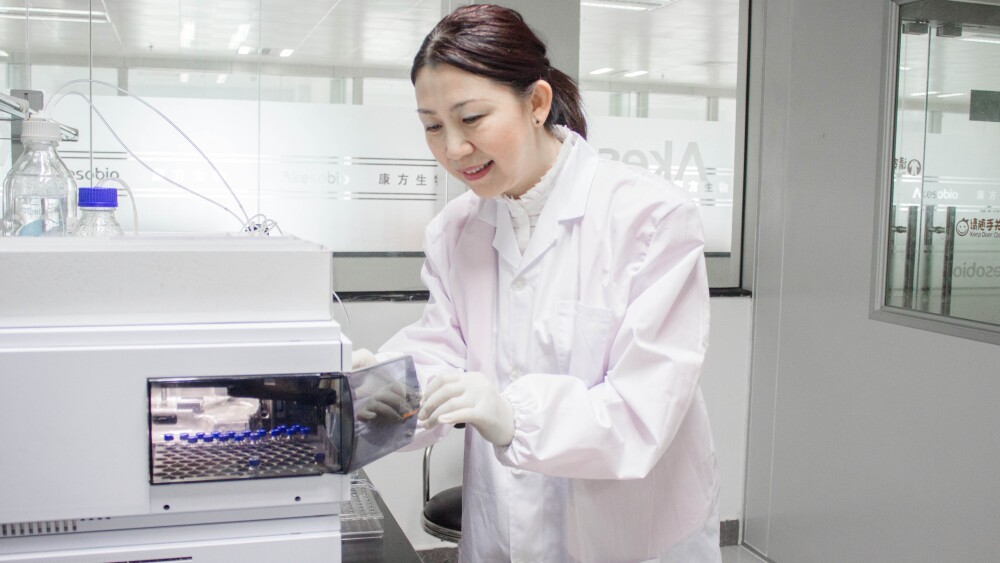Hanmi Pharmaceutical has taken a bold step into 2020, to embrace new challenges to innovative research and development pipelines
- President Kwon Se-chang highlights eight key programs from 29 novel drug pipelines
- Three first-in-class drug candidates presented: novel NASH treatment, dual-acting anti-obesity drug, innovative anti-obesity drug with a whole new mechanism of action
- Clinical trials of new oncology pipelines progressing smoothly; Rolontis and Oraxol are close to obtaining FDA approval
- Accelerate the development of innovative drugs for rare diseases as part of Hanmi's new growth engines
Hanmi Pharmaceutical has taken a bold step into 2020, to embrace new challenges to innovative research and development (R&D) pipelines
SEOUL, South Korea, Jan. 15, 2020 /PRNewswire/ -- The company, led by President and CEO Se-chang Kwon and co-representative Jong-soo Woo, participated in the 38th J.P. Morgan Healthcare Conference in San Francisco during Jan. 13-15, which it presented its vision and major R&D strategies for 2020.
Kwon delivered the presentation at a session on Jan. 15 with key executives including Vice Chairman Gwan-sun Lee and Head of R&D center Kwee-hyun Suh attending.
Kwon highlighted significant pipelines on which the company would focus throughout 2020. He presented eight novel drug candidates among 29 pipelines as key programs, promising the company would make all-out efforts to make successful achievements, including out-licensing.
- What are Hanmi's key R&D pipelines?
The key pipelines highlighted during Kwon's presentation included first-in-class novel drug candidates such as anti-NASH drug candidate HM15211(LAPSTriple Agonist), dual-acting anti-obesity drug candidate HM12525A(LAPSGlucagon/GLP-1 Dual Agonist) and innovative anti-obesity drug candidate HM15136(LAPSGlucagon Analog) that treats obesity with a once-weekly injection.
Attendees paid close attention to anti-NASH drug candidate HM15211(LAPSTriple Agonist) with its innovative differentiation points.
NASH is a complex chronic liver disease, which there is no currently approved therapies. An effective treatment, if any, needs to act simultaneously on multiple indices including steatosis, inflammation and fibrosis. HM15211 showed rapid and potent effect by reducing liver fat in Phase 1 multiple ascending dose study.
It is also effective in suppressing hepatic stellate cell activation and reducing pro-inflammatory cytokines. Hanmi plans to initiate Phase 2 study of HM15211 in the second quarter of this year with biopsy-proven NASH patients around the world.
Another highlighted program, HM12525A(LAPSGlucagon/GLP-1 Dual Agonist), also drew attention which Janssen has returned back its out-licensed rights last year after finishing Phase 2 study. Unlike Janssen, which tried to develop a dual-acting agonist to treat both obesity and diabetes, Hanmi is developing a first-in-class dual-acting anti-obesity drug with stronger efficacy compared to currently existing anti-obesity drug.
Especially, HM12525A is the world's first anti-obesity treatment that works as a once-weekly injection. Its efficacy was proven to be higher than currently existing daily-injection obesity treatment in Phase 2 global trials. In a Head-to-Head comparative study with Liraglutide (branded "Saxenda"), HM12525A achieved double-digit percentage of weight loss, significant blood lipid reduction, blood pressure reduction and a tolerable safety profile.
HM15136, an innovative anti-obesity drug under development with a new mechanism of action, also drew attention. In the obese animal model, HM15136 was twice as effective as currently available drugs in weight loss and shown significant body-weight reduction when administered in combination with the anti-diabetic drug DPP-4. HM15136 targets to reduce approximately 20 percent of body weight. HM15136 completed Phase 1 single ascending dose (SAD) clinical study and the multiple ascending doses, and (MAD) trial is expected to be completed by the third quarter of this year.
- Open Innovation in oncology area
Hanmi plans to expand the oncology pipeline through open innovation, including licensing-in innovative drug-making technologies from external global partners.
Last year, Hanmi has licensed in FLX475 -- an oral immune-oncology asset, CCR4 antagonist developed by U.S. Biopharmaceutical Company RAPT Therapeutics, Hanmi is also developing an immune-oncology bispecific and a multi-specific antibody programs, using an antibody sequence form licensed in from another biopharmaceutical company, Phanes Therapeutics. These open innovation activities reflect Hanmi's commitment to expanding the scope of application for in-house bispecific antibody platform technology called Pentambody.
While a clinical trial of Pan-RAF inhibitor Belvarafenib (HM95573, solid tumors), out-licensed to Genentech, is progressing smoothly, a strategy to expand the treatment indication is under review. Another clinical trial of HM43239, a FLT3 inhibitor for the treatment of acute myeloid leukemia, is going forward smoothly.
The NDA application for the oral anti-cancer drug Oraxol will be submitted in the first half of this year. Rolontis, a biologic drug to treat chemotherapy-induced neutropenia, is expected to obtain FDA approval for commercialization by October of this year, which FDA's review of biologic license application (BLA) is already under way.
- Drugs for rare diseases seen as new growth engines
Hanmi has been aggressively expanding R&D pipelines on rare diseases with high unmet medical needs, believing innovative drugs in this area will become the company's new growth engines.
Among nearly 30 pipeline assets developed by Hanmi, 30 percent (or 8 assets) of them are developed as rare diseases treatment, having five assets have obtained the total of 12 Orphan Drug Designations (also called ODD) from the Ministry of Food and Drug Safety of Korea (MFDS), the U.S. Food and Drug Administration (FDA), European Medicines Agency (EMA) and the Medicines and Healthcare products Regulatory Agency of the United Kingdom (MHRA).
HM15136(LAPSGlucagon Analog) and HM15912(LAPSGLP-2 Analog) were designated as orphan drugs for the treatment of Congenital Hyperinsulinism (CHI) and short bowel syndrome (SBS) in the U.S. and Europe, respectively.
HM43239, a FLT3 inhibitor, was designated as a drug for Acute Myeloid Leukemia (AML) by the U.S. FDA. Furthermore, Hanmi is developing a monthly enzyme replacement treatment for patients suffering from fabry & maroteaux-lamy syndrome.
"We are developing various innovative drugs through open innovation and keeping our robust commitment to R&D amid environmental changes that are increasingly challenging to us," said Kwon. "We will do our best to strengthen Korean pharmaceutical Industry's competitiveness with consistent, performance-based R&D and collaboration with overseas partners."
SOURCE Hanmi Pharmaceutical




